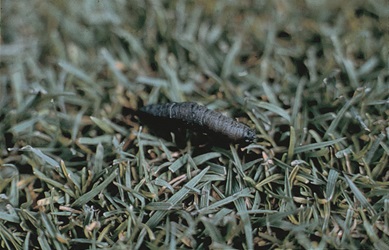Top Tips for Controlling Leatherjackets
Leatherjackets can be a headache for greenkeepers as they severely damage greens, ruin the appearance of turf and can be hard to control. Our resident expert, Dr Colin Mumford, gives greenkeepers his top tips on controlling the pest.
What are leatherjackets?
Leatherjackets are the larvae of crane flies that can occur year-round and are especially abundant after dry periods. The two most common species found in sportsturf are the European Crane fly (Tipula paludosa), and the Common Crane fly (Tipula oleracea).
How to spot leatherjackets
The first step is identifying the signs of leatherjackets in different conditions:
- In dry conditions: Noticeable straw-coloured die back of the turf leaf tissue as leatherjackets attack the roots restricting their ability to take up water and nutrients
- During wet periods or on irrigated greens: Die back does not occur as water is readily available to the plant so monitor for crane flies or secondary damage
- Secondary damage: Look out for birds or mammals on the turf surface. They will feed on leatherjackets, ripping up turf to access them
Monitor crane fly numbers
To get the timing right for controlling leatherjackets you need to monitor the activity of the adult crane flies. Monitor for these from spring to late autumn by:
- Visually monitoring crane fly numbers
- Using pheromone traps to give a definitive measure of crane fly numbers
How to control leatherjackets
Limit irrigation
Crane flies are more attracted to healthy, well managed turf so cultural controls are difficult to put into practice.
Limiting irrigation on greens during egg laying can help. A dry rootzone will cause the eggs to desiccate (dry out) reducing the number of eggs that will hatch, stopping the development of leatherjacket larvae before they become a problem.
Nematode applications
Nematodes are a biological control for leatherjackets that provide a sustainable option for greenkeepers.
Nematodes attack leatherjackets and release a bacterium into the pest which kills them by paralysis.
The nematodes then complete their lifecycle within the leatherjackets; the offspring feed on the cadaver of the leatherjacket and eat their way out of the carcase. This allows nematodes to continue the cycle of control.
Harmonix Tri-Nema, contains three different species of nematodes which have three different modes of action: hunter, explorer, and resident. This combination helps to effectively tackle the pest.
When to apply nematodes
Applying nematodes at the right time is crucial to stop leatherjackets:
- First, monitor adult crane fly numbers
- Apply nematodes three to four weeks after seeing a drop in crane fly numbers – this will mean the eggs laid by the crane fly have hatched enabling the nematodes to target the leatherjackets when they are still young and vulnerable
- Direct sunlight and cold temperatures will limit the activity of nematodes so applications should be made on an overcast day when soil temperatures are above 12ºC
How to apply nematodes
- The day before application, irrigate the area that needs treating so there is adequate moisture for the nematodes to move through
- Remove all sprayer filters as nematodes can get caught in the filters and cause blockages
- Fill the sprayer as you would for any other product, half filling with water, turn on the agitation, add the nematodes and then fill up with the remaining water
- If using a knapsack sprayer, or a smaller capacity sprayer without an agitation function, pre-mix the nematodes in a bucket of water before adding them to the tank
- Use whole packs as the nematodes will move about and may not be evenly distributed throughout the pack
- Within 30 minutes of applying the nematodes, turn on the irrigation briefly to wash any nematodes on the surface of the turf, down into the roots

